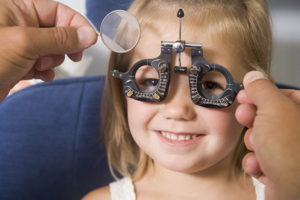

How to Tell if Your Child Needs Glasses
Development of the visual system takes place in the first seven to eight years of a child’s life. Undetected vision problems can affect your child’s academic and personal performance, so it is important to recognize signs that your child may need glasses.
Signs Your Child May Need Glasses:
Squinting: Squinting can help temporarily improve the clarity of an object, so this could be a sign your child has an uncorrected refractive error such as hyperopia, myopia and astigmatism.
Excessive eye rubbing: This can be an indicator your child is experiencing tired or strained eyes. Excessive eye rubbing can also be a sign of many vision problems and conditions.
Covering an eye or tilting their head: Amblyopia (lazy eye) is one of the most common eye disorders in children. Your child may cover an eye or tilt their head to try to see better.
Headaches or eye pain: If your child complains about headaches or eye pain, their eyes may be working too hard to focus on objects.
Getting too close to screens: People who have nearsightedness, or myopia, have difficulty seeing objects at far distances. Bringing an object closer can make the image clearer, so if your child sits too close to the television or holds handheld devices too close, this can be a sign your child may need glasses.
Poor concentration at school: Vision problems can sometimes make a child appear as though they have poor attention because of the need to quickly change focus from near to distance to see things like textbooks, whiteboards and computers.


If you suspect your child needs glasses, book an appointment with our optometrist today. Our doctors of optometry will perform a comprehensive eye exam that includes a visual acuity assessment, checking eye alignment, depth perception and the overall health of the inside and outside of the eye. Regardless of whether your child needs glasses, it is important to have their eyes checked every year by an optometrist to that ensure school-aged children do not have any undiagnosed visual issues that could impede their learning ability.
